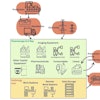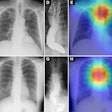
Radiology practices that perform interventional procedures have to be up to date on the use of documentation and coding techniques for evaluation and management (E/M) services.
 Erin Stephens.
Erin Stephens.Since these Current Procedural Terminology (CPT) codes in the 99xxx range are less commonly utilized in many radiology practices, identifying circumstances where E/M services are billable and then properly documenting and coding for them will require a collaborative effort between interventional radiologists (IR) and their coding team.
A patient's visit with the IR prior to a procedure can variously be considered a consultation, an office visit, or a nonbillable component part of the procedure depending on the circumstances. The first step is to determine if a visit is separately billable and then, if it is, what are the proper documentation and coding requirements.
Determine if the service is separately billable
The initial visit might be considered by Medicare and other payors to be a component part of the surgical procedure. The rules that define payment for E/M services use a concept called the Global Surgery Package. The global period (GP) begins on the day of the procedure (or on the preceding day in the case of a 90-day GP) and, depending on the CPT code for the procedure, could run for 0, 10, or 90 days following the procedure.
Generally, E/M visits for the purpose of deciding whether or not to perform a procedure are billable and payable if they occur outside of the GP. During the GP, all services related to the procedure are included as a component part of the surgical package, and therefore are not separately reimbursable.
However, for a procedure with a 90-day global period, considered to be a "major surgery," an E/M service performed on the same day or preceding day for the purpose of deciding whether to perform the procedure may be separately reported and payable with the addition of Modifier -57 (Decision for Surgery).
In the interventional radiology clinic, scheduling the patient's initial visit with the physician at a time distinctly separate from the procedure itself will allow the billing of E/M codes in addition to the coding for the procedure. Thus, for a 0- or 10-day GP procedure, the initial visit should be no later than the day prior to the procedure and for a 90-day GP procedure it should be at least two days prior to the scheduled procedure unless it fits into the exception described above. Otherwise, a consultation on the same day as the procedure or on the day preceding the procedure will usually not be separately billable.
The global surgery package rules also preclude reimbursement for any follow-up visit that takes place subsequent to the procedure but within the GP. In some Medicare payment localities, and for some commercial payors, these visits are to be reported with CPT 99024 (postoperative follow-up visit) to indicate that they took place, but they will not be reimbursed.
| Interventional Radiology -- Examples |
| 90-day Global Surgery Package |
|
| 10-day Global Surgery Package |
|
| 0-day Global Surgery Package |
|
Determine the level of service
When an E/M visit is separately billable, determining the level of coding depends first on where the service takes place. Beginning in 2021, hospital outpatient and office procedures will be determined either by the level of medical decision-making or by the total time spent on the patient's case on the date of service. Prior to 2021, the level of service was determined by using a seven-level evaluation of components, but today the system is much simpler. Note that the rules for hospital inpatient and emergency department services have not yet changed.
The following table outlines the current criteria for each level of outpatient coding.
| Level of medical decision-making | New patient | Existing patient | ||
| Total Time Spent | Code | Total Time Spent | Code | |
| Minimal | - | - | N/A | 99211 |
| Straightforward | 15-29 minutes | 99202 | 10-19 minutes | 99212 |
| Low | 30-44 minutes | 99203 | 20-29 minutes | 99213 |
| Moderate | 45-59 minutes | 99204 | 30-39 minutes | 99214 |
| High | 60-74 minutes | 99205 | 40-54 minutes | 99215 |
A "new patient" is one who has not received any professional services from the IR or another IR physician who belongs to the same group practice within the previous three years.
Most often the level of billing for IR evaluations will be at the lower end of the spectrum and the easiest way to determine the appropriate level of coding is to monitor the amount of time spent. The total time to be used in the determination encompasses both face-to-face and non-face-to-face time personally spent by the physician and/or other qualified healthcare professionals in the practice, and includes the following:
- Review of tests and outside records in preparation for the patient's visit
- Obtaining a history or reviewing a separately obtained history of the patient
- Performing a medically appropriate exam or evaluation
- Counseling and educating the patient and their family or caregiver
- Ordering medications, tests, or procedures
- Documenting clinical information in the medical record
- Independently interpreting results (when not separately reported) and communicating results to the patient and their family or caregiver
- Referring and communicating with other health care professionals (when not separately reported)
- Care coordination (when not separately reported).
The level of coding can also be determined based on the level of medical decision-making. This is a fairly complex system of points awarded for the number and complexity of problems addressed in the visit, along with the risk of complications and/or morbidity or mortality, that is beyond the scope of this article. See below for additional sources on this topic.
Consultations versus office visits
A visit with the IR to determine the propriety of an interventional procedure is often referred to as a "consultation," but the term has a very specific definition and set of requirements in the context of coding and billing. A "consultation" is defined as a service that:
- Requires an opinion or advice regarding the evaluation and management of a specific problem, and
- Is requested by another physician or other appropriate source. A consultation initiated by a patient or family member but not requested by a physician may not be reported using consultation codes but rather will be reported using the office visit codes.
When they are available for use, consultation codes in the range 99241-99245 normally carry a higher reimbursement than office visit codes for the same level of service, but they also require some additional work. The request for consultation, the consultant's opinion, and any services that are ordered or performed must all be documented in the patient's medical record and communicated by written report to the requesting physician.
The criteria for determining the level of coding for consultation codes did not change in 2021 and so the old system will still apply. This includes the following three key components:
- History,
- Physical exam
- Medical decision-making
These, along with the amount of face-to-face time spent with the patient. In order to code using time as the determining factor, at least 50% of the visit has to be counseling the patient or coordinating care. All of this must be documented in the medical record.
Consultation codes are not recognized by Medicare or by certain other payors such as United Healthcare. For those payors, the appropriate regular office visit codes are used even if the tasks of additional documentation and sending a separate written report are performed. Note, however, that under the new time-based rules for E/M visits, the time to document and create a separate report is added to the overall visit time, and perhaps this could lead to a higher level of coding and reimbursement.
Additional considerations
The U.S. Centers for Medicare and Medicaid Services provides an Evaluation and Management Services Guide (currently unavailable pending revision) and a Global Surgery Booklet, both of which contain a wealth of detailed information on this topic. A comprehensive coding worksheet is available from the American Academy of Professional Coders.
It is imperative that the radiologist's coding team be familiar with the rules and regulations surrounding the billing of E/M codes. The practice should be sure their coders routinely receive the consultation or office visit reports in order to properly determine the correct billing, preferably via the usual billing interface.
Summary
Understanding the nuances of evaluation and management service billing will allow interventional radiology practices to set up their scheduling, documentation, and reporting systems in a way that optimizes their ability to maximize revenue from patient interactions surrounding interventional procedures.
Erin Stephens is senior client manager, education at Healthcare Administrative Partners.
The comments and observations expressed are those of the author and do not necessarily reflect the opinions of AuntMinnie.com.



















